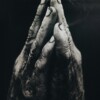
The Pleasures of Reading in an Age of Distraction
In Gary Shteyngart’s near-future novel Super Sad True Love Story, a poignant scene occurs when forty-something Lenny tries to read a book to twenty-something Eunice, a college graduate with the most prestigious education of her day. Eunice, faced with a Milan Kundera tome, admits, “I never really learned to read texts. … Just to scan them for info.”1 The fictional Eunice could well be part of the audience for Wheaton College English professor Alan Jacobs’s slim, essayistic The Pleasures of Reading in an Age of Distraction: those who want to read well—and to enjoy doing it—but feel they have either lost the ability or never possessed it in the first place. The question is: would Eunice or her real-life counterparts be likely to pick up a book in order to restore or develop their pleasure in reading?
The first section of The Pleasures of Reading suggests a twin genesis for the concerns addressed within the book, neatly corresponding to the two halves of the title. First, Jacobs, declaring that “despite the lamentations of many contemporary Jeremiahs, the cause of reading is not a lost one by any means” (5), scorns formulaic, eat-your-vegetables approaches to how and why people should read. To those vigilantes who would turn to Mortimer Adler and Charles van Doren’s classic How to Read a Book (rev. ed. 1972) for a solution to the supposed crisis of reading, Jacobs responds that “its strongly legislative tone is not suited to today’s habits of mind” (8). The “aroma of Responsibility, Obligation, and Virtue emanating from” it will send “diffident readers, embarrassed non-readers, and guilt-stricken ex-readers” (12) fleeing for the creative comfort of Twitter, YouTube, and iPhone apps. Instead, Jacobs advises reading for pleasure, not governed by any “Books You Should Read to Be an Educated Person” list, but rather directed only by what he refers to as “Whim.” While Jacobs rejects lowercase “whim” as “thoughtless, directionless preference that leads to boredom or frustration or both” (41), he celebrates uppercase “Whim” as a guide that, like the Swiss tutor who gave direction to a rudderless young Edward Gibbon’s studies, does not “refute or replace [our] innate preferences” but aids us “to see where those preferences properly” lead (40). Whim takes no account of gatekeepers like Harold Bloom, who laments the popularity of the Harry Potter books as evidence of “subliteracy.” If Whim leads you to Hogwarts, then follow it, suggests Jacobs. Then be open to wherever Whim leads next, whether to Christopher Marlowe’s Doctor Faustus or Lev Grossman’s The Magicians.
The second thread implied in the title, mentioned in the first section, and weaving throughout the book, is the acknowledgment that our attention is indeed taxed in new and challenging ways. Though The Pleasures of Reading admonishes against hands-wringing over the future of reading, Jacobs does take seriously Nicholas Carr’s lament in The Shallows: What the Internet Is Doing to Our Brains (2010) that we seem to have lost the ability for sustained reading of more than two or three pages of prose. Later in the book, Jacobs admits that he, too, had begun to struggle with distraction, until help arrived, deus ex machina-style, in the form of a Kindle.
Jacobs certainly never lost his love of reading—it would be most inconvenient for a literature professor to do so—but he confesses that over the past two years, he realized that he “was reading fewer books than [he] had since age ten, and reading them less well—with less attention—and therefore getting less pleasure from the reading” (79). The Kindle helped to remedy this conundrum because it encourages an immersive reading experience: “E-readers, unlike many artifacts of the digital age, promote linearity—they create a forward momentum that you can reverse if you wish, but not without some effort” (81). You simply keep clicking the arrow button, since it is such a nuisance to flip to the end of the chapter or to the endnotes.
While this point could be developed further within the book, it does provide some possible explanation for the structure of The Pleasures of Reading, which has no table of contents or traditional chapter divisions. The book is a series of 20 (and I know there are 20 only because I counted them) mini-essays with titles like “Upstream” and “Plastic attention.” I say “essays,” but in truth the sections are not as self-contained as we would expect from that genre. For example, the section “Aspirations” discusses the difficulty faced by some readers who fall in love with a particular author’s work—J. R. R. Tolkien or Jane Austen, to use the examples Jacobs uses—and then are disappointed that once they have read this author’s oeuvre, there is no more. They can choose to read Tolkien or Austen imitators, or even fan fiction, but those copies will pale in comparison to the originals, and, furthermore, there is the danger that “once a reader is acclimated to the pedestrian, the mundane, and the predictable, he or she can come to accept them as normal—normal, if not delightful” (37). Wait. Is this the same Jacobs who rejected the Monitors of Quality in favor of Whim? Jacobs anticipates this question, saying,
So if I don’t want to say that all reading is equally good, equally valuable, but I also don’t want to give in to the Vigilant School, then what standard of readerly value am I appealing to? Answer: I am appealing to the standard of the reader’s own pleasure—a criterion that sounds more simple and straightforward than it actually is. (38)
The “Aspirations” section then leaves behind overt discussion of literary judgment and taste, and Jacobs returns to it only toward the end of the book, in a section called “Judge, jury, and executioner.” The book is driven by Whim not only in its subject matter but also in its organizational style and, to return to Jacobs’s earlier point about the reading style encouraged by e-readers, The Pleasures of Reading in an Age of Distraction may be one of the first books written for the Kindle.
Such a structure may prove either frustrating or refreshing to a reader accustomed to the self-contained style of the argumentative chapter. Like all of Jacobs’s essays and books, The Pleasures of Reading has an engaging voice, and readers may willingly follow it down sometimes-meandering paths. Academic readers may be most interested in a section called “Getting schooled,” in which Jacobs reminds us that, historically, those who have had the ability and the inclination to read deeply and well have been a small percentage of the population—and that this percentage is unlikely to change much even as more and more Americans earn college degrees. Jacobs frankly acknowledges the reality that, despite the best intentions of professors, higher education is failing to teach students to cultivate deep attention while reading, and he suggests with reasonable radicalism, that may be all right:
The academic study of literature is a wonderful thing, and not just because it has paid my salary for most of my adult life, but it is not an unmixed blessing, and teachers will rarely find it possible simply to inculcate the practices of deeply attentive reading that I commend in this book.
Over the past hundred and fifty years, it has become increasingly difficult to extricate reading from academic expectations; but I believe that such extrication is necessary. Education is and should be primarily about intellectual navigation, about—I scruple not to say it—skimming well, and reading carefully for information in order to upload content. Slow and patient reading, by contrast, properly belongs to our leisure hours. (114)
There is a passage that demands cogitative reading, and it causes me to question my first reading of Eunice’s comment in Super Sad True Love Story. In the months since I read that novel, I have been quoting that passage to my students, telling them that what I, as an English professor, am trying to help them do is to read texts, rather than just scan them for info—to convince them that there is a difference between reading “The Love Song of J. Alfred Prufrock” and reading a SparkNotes summary of “The Love Song of J. Alfred Prufrock.” For Jacobs, these efforts are futile because of the element of compulsion involved. If one is reading for a grade, Whim has no room to operate. Better to admit that when students read for class, they will scan for info. When they read for pleasure, a very few may read deeply.
Given that Jacobs bills this point about “hyper attention” and “deep attention” (drawing from N. Katherine Hayles’s terms) as “one of the most important arguments in this book,” one aspect of The Pleasures of Reading struck me as strange. If any feature of the standard book is ideally designed for hyper-attentive reading, it is the bibliography. However, rather than providing a formatted list of citations, Jacobs appends “An Essay on Sources,” which introduces sources in narrative form, linking them only to the section titles of the book (rather than to specific pages). A few days after completing The Pleasures of Reading, I came across a reference to Ivan Illich in my own research, remembered that Jacobs had mentioned him, and wondered if he used the same source. I then had the trouble not only of trying to remember the section of the book in which Illich appeared, but then of skimming paragraphs for the information I wanted. A small complaint, perhaps, but I mention it because of my own resistance to what I felt as compulsion emanating from the book: you must read about sources in thisway, not in the way you are accustomed to doing so.
As far as its theological reflection, The Pleasures of Reading is rather like the Book of Esther: God does not receive direct mention, but the Christian reader—particularly the reader familiar with Jacobs’s history of thoughtful Christian engagement—may discern the hand of divine providence moving behind Whim. In the section titled “Serendip,” Jacobs treats serendipity—another face of Whim—as a spiritual discipline:
Fortuity happens, but serendipity can be cultivated. You can grow in serendipity. You can even become a disciple of serendipity. … But in the very idea of serendipity is a kind of hope, even an expectation, that we can turn the accidents of fortune to good account, and make of them some knowledge that would have been inaccessible to us if we had done no more than find what we were looking for. Indeed, it may be possible not only to cultivate the sagacity but also the accidents. It may be possible, and desirable, to actively put yourself in the way of events beyond your control. (143-144)
Digital technology can be a great aid to serendipity: Jacobs mentions as his prime example Amazon.com’s “People Who Bought This Item Also Bought” feature. The humility and self-surrender necessary to let serendipity direct one’s reading choices certainly has potential as a Christian posture. However, by the end of The Pleasures of Reading, what exactly distinguishes Whim from whim still remains a little unclear. Ultimately, though Jacobs does not directly say so, God’s wise guidance may be the key factor. How, then, is Whim different from “Bible roulette,” in which the reader, claiming openness to the Holy Spirit, opens the Bible to a random page, assuming that what appears there is a situation-specific message sent by God? The Pleasures of Reading does not say. Fortunately, those more interested in Jacobs’s reflections on reading from a distinctly Christian perspective can turn—directed, perhaps, by Whim—to his earlier book, A Theology of Reading: The Hermeneutics of Love (2001).






















